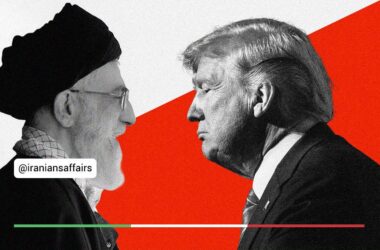It is likely that the price of gasoline will increase in 1404 (2025–2026). However, the issue of raising gasoline prices, along with other fuels and energy resources, remains one of the most critical and complex plans for the government’s future. Extracting the details of this plan from the news and opinions is challenging, but some aspects and scenarios can be highlighted.
The draft of the 1404 national budget law projects that the price of aviation fuel will reach up to 30% of the market price in the Persian Gulf region, resulting in more than a tenfold increase compared to current prices. No specific legislation has been made for other fuels, but in recent years, the government has used seasonal strategies to manage public discontent: electricity prices are increased at the beginning of the colder months, and gas prices rise at the start of the warmer months. The shock effects of these price hikes diminish over several months until peak consumption begins again. Moreover, these increases are applied incrementally, tailored to regional factors, such as urban versus rural areas or central versus peripheral regions, to manage public perception.
For industries, although the price hikes have been more substantial, the relatively low share of energy costs in their final production prices and the existence of various subsidies have mitigated public dissatisfaction. However, the transportation sector poses a serious challenge. Freight transportation has long benefited from cheap diesel fuel, and given the sector’s sensitivity, no price increase plan has been announced. The inflationary impacts of rising diesel prices, coupled with the crises caused by the uneven development of the vast Iranian territory, exacerbate this issue.
The fuel supply crisis in Iran is severe, and the government emphasizes this under the label of an “energy imbalance.” This has reached a point where difficult decisions are imminent. Domestic production capacity is limited, and financial constraints, especially in light of Trump’s return and the continuous targeting of the “Axis of Resistance” led by the Islamic Republic in the Middle East, have intensified. Therefore, it is worth examining several likely scenarios based on published news and information.
Scenario One: Allocating Gasoline to Individuals Instead of Vehicles
This scenario is based on the idea of allocating gasoline to individuals rather than vehicles. The concept of “one liter per Iranian per day” aligns with current consumption patterns. Thus, each Iranian would receive 30 liters of gasoline per month, which could either be used at a subsidized price (e.g., 1,500 tomans) or sold on the market at a competitive or pre-determined price exceeding 10,000 tomans. It remains unclear whether this resale would be organized through intermediaries, exchanges, or other entities, or whether it would be conducted on a government platform. Supervision over pricing is also undefined. Furthermore, the allocation for official and unofficial passenger transport services and the status of diesel and freight vehicles in this model remain ambiguous.
Despite some factions within the government pushing for this model, the necessary infrastructure has not been established, and the risk of information disruptions (e.g., hacking of data and access systems) persists. The government favors this scenario because it shifts the burden of subsidies. This model may temporarily coexist with the current system. Potential confusion, privileges, and ambiguities could also help diffuse public outrage and prevent nationwide protests. The government views this plan as a fairer way to distribute subsidies, claiming it supports low-income families (especially those without vehicles), rural families, and smaller urban areas. They also argue it aligns with pro-natalist policies and efforts to stabilize population distribution.
Other Scenarios: Multi-Regional, Multi-Tiered, and Multi-Phased Strategies
The other scenarios are shaped by three key components: region-based implementation, multi-tiered pricing, and phased execution.
In a region-based approach, price hikes might start earlier in metropolitan and border regions. Avoiding nationwide discontent is a high-level security strategy across all issues. For example, internet restrictions and enforcement of dress codes have also been implemented regionally, sometimes even down to specific neighborhoods. Similarly, gasoline price hikes would likely follow this pattern. The government also applies differentiated policies in pricing electricity, gas, and other public energy services based on urban centers, suburban areas, small towns, villages, border regions, and deprived areas.
The multi-tiered strategy could introduce a third official price nationwide, establish an indeterminate non-governmental gasoline price, or allow the entry of high-quality gasoline priced similarly to neighboring countries. A combination of tiered prices, subsidy-based allocations, and differentiated quality could make this approach more meaningful, especially when combined with regional differentiation.
In the phased strategy, the focus is on gradually implementing price hikes. Initially, the quantity of subsidized allocations and current prices remains unchanged, while consumption without a fuel card is limited and subjected to new pricing. Later, restrictions would apply to secondary-tier allocations. Eventually, the government might alter the prices or volumes of both primary and secondary allocations. Over time, the cheaper primary price may be eliminated, and the secondary price adjusted to reflect inflation under the guise of “service costs” minus the value of raw resources. For official and unofficial service vehicles (e.g., ride-hailing), special incentives and packages would be offered to prevent significant dissatisfaction.
Thus, the combination of phased, regional, and tiered pricing would stretch over several months or years, avoiding widespread unrest while incrementally raising gasoline prices. These hikes would contribute to inflation without causing immediate shocks. For the government, inflation continues to serve as a source of revenue and wealth redistribution. Following gasoline price hikes, it would be easier to increase electricity, gas, and even diesel prices. Diesel, however, presents additional complexities. Successfully implementing the gasoline plan would bolster the confidence of those tasked with raising energy prices.
The Government’s Stance on Price Hikes
The government has made its decision on price increases. Reducing government expenditures is not an option, so the issue is one of timing and execution. Regarding both, the government is awaiting global and regional developments. Unlike in the past, the government is opposed to surprising or shocking the public. Intelligence and security agencies have likely issued warnings. When officials repeatedly state that they will “discuss gasoline prices with the people,” it suggests they will justify the hikes with arguments about benefiting low-income individuals or improving air quality. They will emphasize that price increases target excessive consumption and will not allow public transportation fares to rise. Gasoline may also be used as the basis for new subsidies or offset with cash or in-kind assistance for economically disadvantaged groups.
The government’s propaganda machine has already been activated, emphasizing the need for “realistic” pricing to optimize consumption, reduce pollution, improve living standards, and promote fairness. However, most people see these claims as false. Vehicle fuel consumption could be reduced by 30–50% through duty-free imports of foreign cars, which would lower foreign car prices in the domestic market by 50–70% and make them more accessible to the public. Yet, the government will not pursue this option.
Despite Iran’s access to energy resources, outdated vehicles, appliances, and industries, Iranians’ per capita energy consumption is 20% lower than that of affluent countries (OECD members). Claims of excessive energy consumption in Iran are baseless. Comparing Iran with global averages, especially with historically underdeveloped or energy-poor nations, is misleading.
Another misleading claim is the promotion of fairness through wealth redistribution from natural resources. This approach has been based on socialist methods that ignore the importance of wealth creation and economic growth through investment. As a result, not only have poorer groups not benefited, but they have also been subjected to greater pressure and hardship. The share of energy costs in the household budgets of the poorest decile is double that of the wealthiest decile. This disparity, which predates the recent price hikes, may have increased and highlights the disproportionate burden on low-income households.
For years, the government has sought to redistribute slices of the economic pie more equitably. However, people ultimately care less about proportional shares and more about the size of the pie itself. Addressing inequality is meaningful only if accompanied by economic growth and wealth creation; otherwise, poverty will simply continue to be redistributed. In this rentier system, where privileges are granted to government affiliates, there is little room for genuine wealth redistribution or justice.







